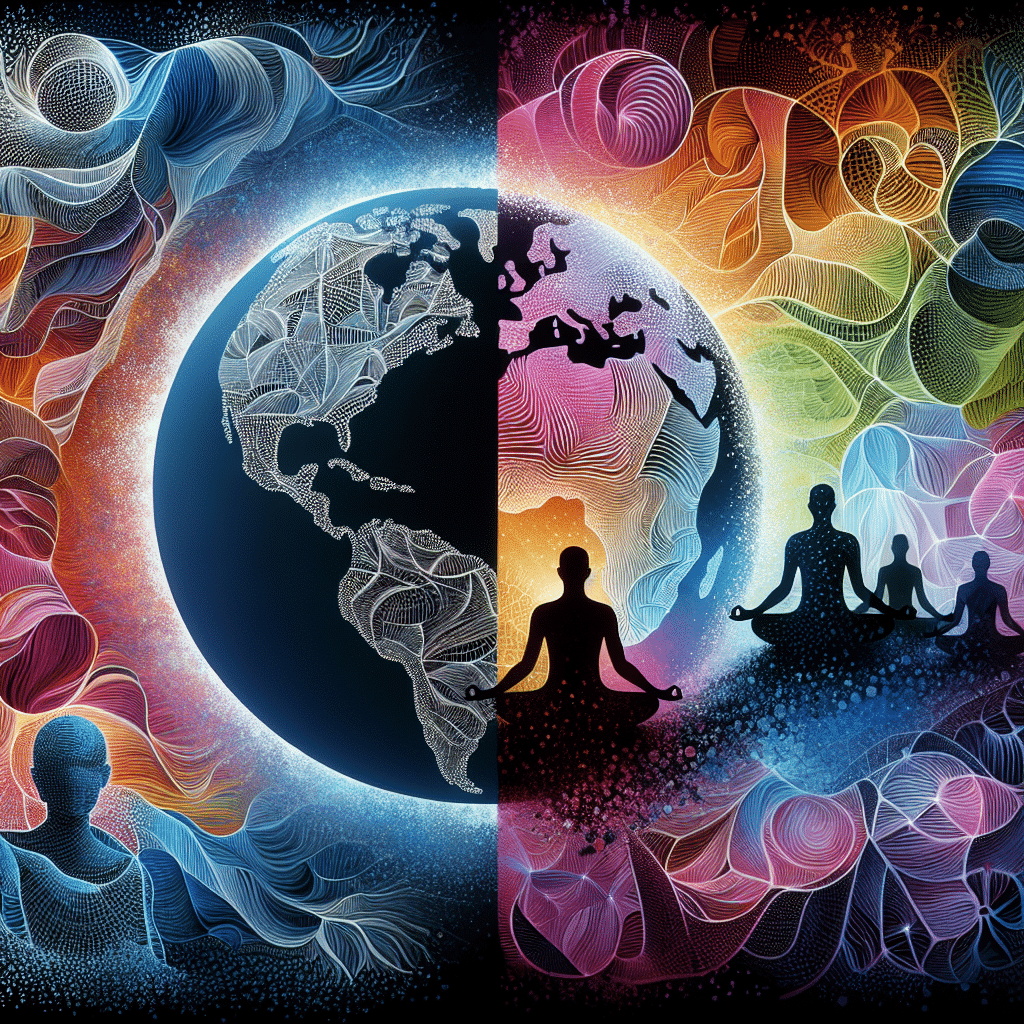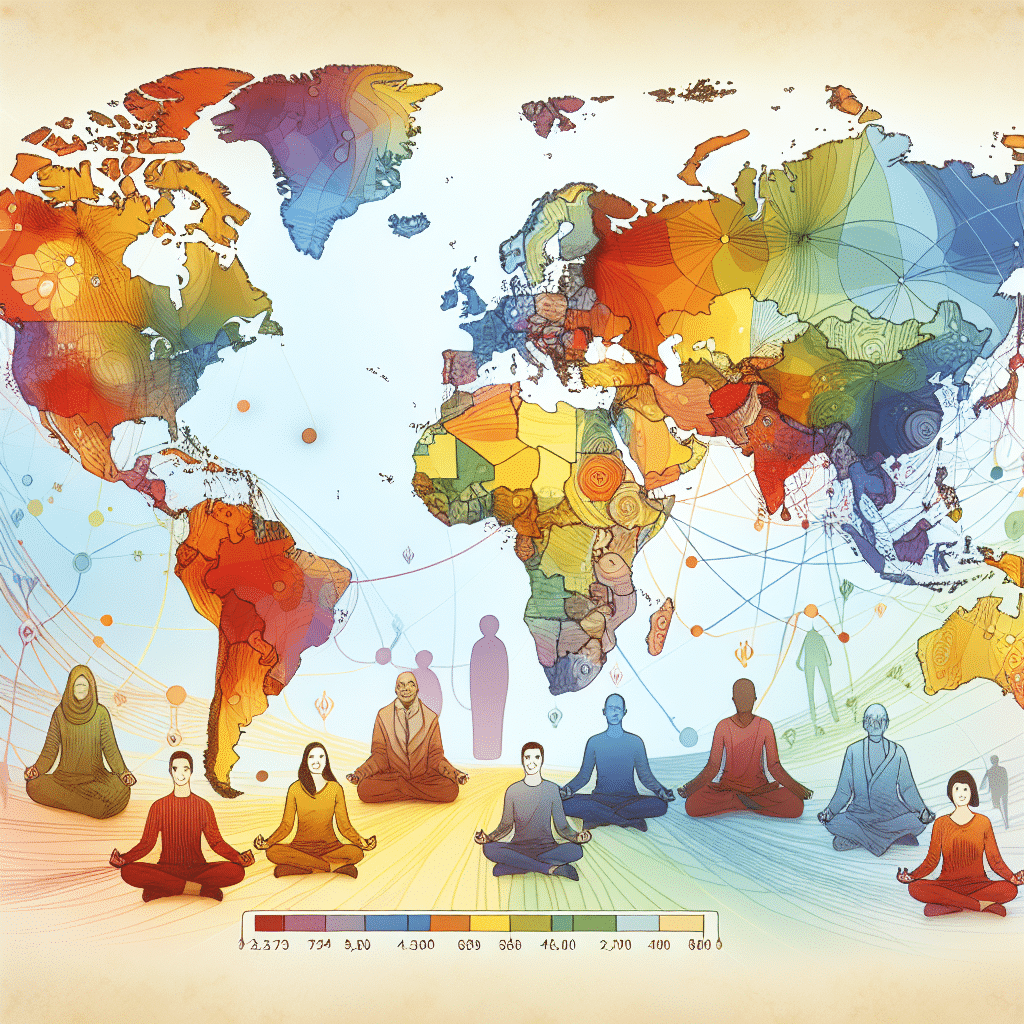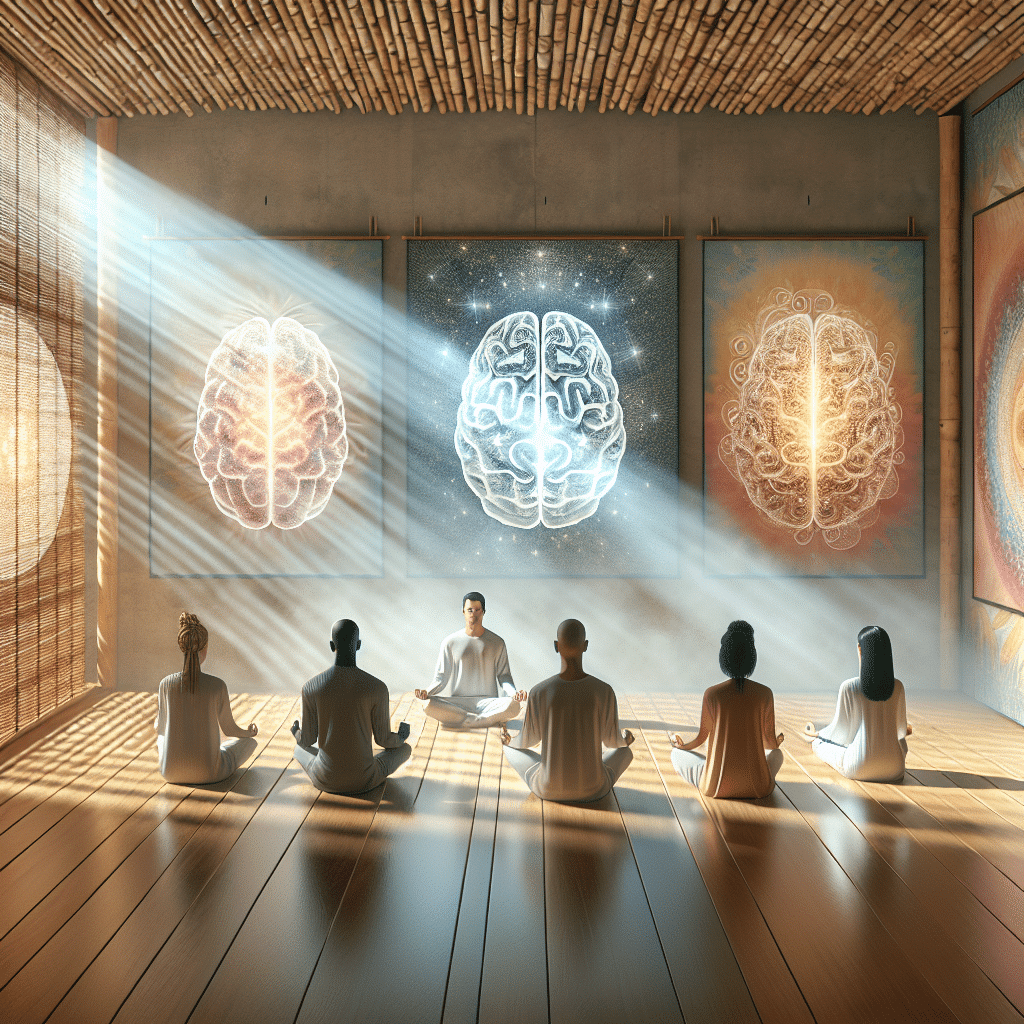
In today’s fast-paced world, finding inner peace has become a global trend as more individuals seek to balance their hectic lives with moments of tranquility. Inner peace is a state of calmness, harmony, and emotional well-being that is essential for personal growth and overall happiness. Let’s explore the global trends in inner peace and how people are striving to achieve this state amidst the chaos of modern life.
Inner peace is a universal concept that transcends cultural boundaries and is embraced by people from all walks of life. In a world filled with stress, anxiety, and uncertainty, the quest for inner peace has become a priority for many individuals seeking solace and balance. The global trend in inner peace is fueled by a desire to find a sense of calmness amidst the chaos of daily life and to cultivate a deeper connection with oneself and others.
From mindfulness practices to meditation retreats, people around the world are increasingly turning to various techniques and strategies to foster inner peace. In countries like Japan, mindfulness and Zen practices are ingrained in daily life, promoting a sense of presence and awareness. In India, yoga and meditation are widely practiced to cultivate inner peace and spiritual growth. Even in Western countries, the popularity of wellness retreats, mindfulness apps, and self-care practices reflects a growing interest in achieving inner peace in a fast-paced world.
As the global trend in inner peace continues to gain momentum, it is important to consider the various factors that influence one’s ability to cultivate this state of calmness and well-being. These factors can range from personal beliefs and values to societal norms and environmental influences. By understanding the root causes of inner turmoil and adopting effective coping mechanisms, individuals can navigate life’s challenges with resilience and grace.
In conclusion, the global trend in inner peace highlights a universal longing for emotional balance and harmony in an increasingly chaotic world. By embracing mindfulness, meditation, and self-care practices, individuals can nurture their inner peace and cultivate a greater sense of well-being. As the quest for inner peace continues to evolve, it is important to prioritize self-reflection, self-awareness, and self-care in order to thrive in today’s fast-paced society.
Global Trends in Inner Peace
Inner peace is a concept that transcends borders and cultures, and in today’s interconnected world, the pursuit of inner peace has become a global trend. People from all walks of life are seeking ways to find harmony within themselves despite the chaos and stress of modern life. Several global trends reflect the increasing importance of inner peace in today’s society.
One of the trends in inner peace is the rise of mindfulness practices. Mindfulness, rooted in ancient Eastern philosophies, has gained popularity worldwide as a way to cultivate awareness, presence, and inner calm. From meditation apps to corporate wellness programs, mindfulness has become a mainstream tool for finding inner peace amidst the hustle and bustle of daily life.
Another global trend in inner peace is the growing interest in holistic well-being. As people recognize the interconnectedness of mind, body, and spirit, there is a shift towards more holistic approaches to health and wellness. Practices such as yoga, tai chi, and energy healing modalities are gaining popularity as tools for fostering inner peace and balance.
The importance of self-care and self-compassion is also a prevalent trend in the pursuit of inner peace. In a world that often glorifies busyness and productivity, more people are realizing the importance of taking care of themselves mentally, emotionally, and physically. Setting boundaries, practicing self-care rituals, and prioritizing mental health are becoming essential components of maintaining inner peace.
Lastly, the global trend of conscious living is influencing how people approach inner peace. From sustainable living practices to ethical consumption choices, being mindful of our impact on the world around us is connected to our inner sense of peace and fulfillment. The trend towards conscious living reflects a deeper understanding of the interconnectedness of all beings and the importance of living in alignment with our values.
In conclusion, the pursuit of inner peace is a universal aspiration that transcends cultural boundaries. As people around the world seek ways to find harmony and balance within themselves, global trends in mindfulness, holistic well-being, self-care, and conscious living are shaping how we approach and cultivate inner peace in our lives.
Factors Influencing Inner Peace
Inner peace is influenced by a variety of factors, both internal and external, that can either contribute to or disrupt our sense of calm and serenity. Understanding these factors can help individuals make conscious choices to cultivate inner peace in their lives. Some key factors that influence inner peace include:
1. Mental Well-being
Our mental health plays a significant role in our ability to maintain inner peace. Stress, anxiety, depression, and other mental health issues can create turmoil within us and hinder our ability to experience peace and contentment. Practices like mindfulness, meditation, and therapy can help improve mental well-being and promote inner peace.
2. Physical Health
Our physical well-being is closely tied to our emotional and mental states. Eating a healthy diet, getting regular exercise, and getting enough sleep are important factors that can impact our inner peace. When our bodies are healthy and functioning optimally, we are better equipped to handle life’s challenges with grace and composure.
3. Personal Relationships
The quality of our relationships with others can have a profound impact on our inner peace. Interpersonal conflicts, toxic relationships, and feelings of loneliness or isolation can disrupt our sense of tranquility. Cultivating healthy, supportive relationships and setting boundaries with toxic individuals can help create a positive environment conducive to inner peace.
4. Environment
Our physical surroundings can also influence our inner peace. Cluttered, chaotic spaces can create feelings of stress and unease, while clean, organized environments can promote a sense of calm and clarity. Spending time in nature, creating a peaceful sanctuary at home, and decluttering our living spaces can all help enhance our inner peace.
5. Spirituality and Purpose
Having a sense of purpose and connection to something greater than ourselves can contribute to our inner peace. Spiritual practices, meditation, prayer, and engaging in activities that align with our values and beliefs can help us feel grounded and at peace with ourselves and the world around us.

Benefits of Inner Peace
Inner peace is a state of mental and emotional calmness, free from stress and anxiety. In today’s fast-paced and chaotic world, achieving inner peace has become increasingly important for our overall well-being. There are several benefits associated with cultivating inner peace:
1. Reduced Stress Levels
One of the primary benefits of inner peace is a significant reduction in stress levels. When we are able to maintain a sense of calm and balance, we are better equipped to handle life’s challenges and stressors without becoming overwhelmed.
2. Improved Mental Health
Inner peace is closely linked to improved mental health. By learning to quiet our minds and focus on the present moment, we can reduce symptoms of anxiety, depression, and other mental health conditions.
3. Enhanced Relationships
When we are at peace within ourselves, we are better able to cultivate positive and meaningful relationships with others. Inner peace fosters empathy, compassion, and patience, leading to healthier interactions with those around us.
4. Increased Clarity and Focus
Inner peace allows us to quiet the noise of our minds and focus on what truly matters to us. This increased clarity helps us make better decisions, set meaningful goals, and stay focused on our priorities.
5. Improved Physical Health
Research has shown that there is a strong connection between inner peace and physical health. Those who regularly practice mindfulness and cultivate inner peace are less likely to experience chronic illnesses, such as heart disease, high blood pressure, and autoimmune disorders.
Overall, the benefits of inner peace are far-reaching and impact every aspect of our lives. By prioritizing our mental and emotional well-being, we can experience greater peace, happiness, and fulfillment in our lives.
Ways to Cultivate Inner Peace
Inner peace is a state of calmness and tranquility that is sought after by many individuals in today’s fast-paced and chaotic world. Cultivating inner peace requires dedication and practice, but the rewards are well worth the effort. Here are some effective ways to cultivate inner peace:
Mindfulness Meditation
Mindfulness meditation is a powerful tool for cultivating inner peace. By focusing on the present moment and being aware of your thoughts and feelings without judgment, you can calm your mind and reduce stress and anxiety. Practice mindfulness meditation regularly to experience a greater sense of inner peace.
Yoga and Tai Chi
Yoga and Tai Chi are gentle forms of exercise that promote relaxation, reduce stress, and increase mindfulness. These practices involve breathing exercises, gentle movements, and meditation, which can help you connect with your inner self and cultivate a sense of peace and tranquility.
Gratitude Journaling
Keeping a gratitude journal can help shift your focus from negative thoughts to positive ones and cultivate a sense of inner peace. Write down things that you are grateful for every day, no matter how small, to remind yourself of the positive aspects of your life and increase your overall sense of well-being.
Spending Time in Nature
Connecting with nature is a powerful way to cultivate inner peace. Spending time outdoors, whether it’s going for a walk in the park, hiking in the mountains, or relaxing by the beach, can help you feel grounded, reduce stress, and promote a sense of calm and well-being.
Self-Care and Mindful Living
Practicing self-care and mindful living is essential for cultivating inner peace. Take time to nurture yourself, set boundaries, practice self-compassion, and prioritize activities that bring you joy and happiness. By taking care of your physical, emotional, and spiritual well-being, you can create a foundation for inner peace to flourish.

Conclusion
Inner peace is a state of calmness and tranquility that is becoming increasingly sought after in today’s fast-paced world. Global trends show a growing interest in practices such as meditation, mindfulness, and yoga as ways to cultivate inner peace.
Factors such as stress, anxiety, and societal pressures can hinder inner peace, but individuals and communities are working towards creating a more peaceful and harmonious world.
By understanding the benefits of inner peace and actively seeking ways to cultivate it, individuals can contribute to a more peaceful and fulfilling society for themselves and future generations.






